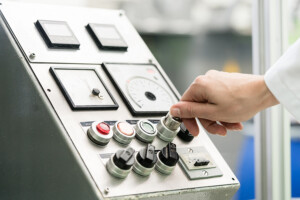 In my last post I looked at the preparations for a proper ramp-up or start of a machine or process. This post is the second part where you actually press the button and start the machine. I will also discuss the ramp-down procedures, as well as a SMED-like approach to improve the ramp down and up again process.
In my last post I looked at the preparations for a proper ramp-up or start of a machine or process. This post is the second part where you actually press the button and start the machine. I will also discuss the ramp-down procedures, as well as a SMED-like approach to improve the ramp down and up again process.
Christoph Roser
Preparation for Ramp Up and Down of Production
 Some factories work around the clock. But more commonly, factories ramp up at the beginning of the week, workday, or shift and then ramp down at the end. I often have the feeling that this is a somewhat neglected topic despite its influence on safety, quality, and efficiency. Hence I would like to take a closer look at the ramp-up and ramp-down procedures in industry, and how to optimize them. This first post will look at how to prepare a ramp-up before actually flicking the switch of the process.
Some factories work around the clock. But more commonly, factories ramp up at the beginning of the week, workday, or shift and then ramp down at the end. I often have the feeling that this is a somewhat neglected topic despite its influence on safety, quality, and efficiency. Hence I would like to take a closer look at the ramp-up and ramp-down procedures in industry, and how to optimize them. This first post will look at how to prepare a ramp-up before actually flicking the switch of the process.
Happy 10th Birthday, AllAboutLean.com
 It has been ten years since I started this blog. When I first posted on September 1, 2013, I never though that it would go on this long. But it has. Now there are 525 blog posts (or 663 if you include the Chinese and German translations) and a total of 765 000 words with (mostly?) high-quality content on lean manufacturing and related topics. Time to look back and also to celebrate!
It has been ten years since I started this blog. When I first posted on September 1, 2013, I never though that it would go on this long. But it has. Now there are 525 blog posts (or 663 if you include the Chinese and German translations) and a total of 765 000 words with (mostly?) high-quality content on lean manufacturing and related topics. Time to look back and also to celebrate!
When to Use Standards…and When Not
 Work standards are a key component to continuous improvement. A standard is a tool that (if used correctly) prevents drifting away from a best-practice approach to do a task. Hence, I sometimes read that everything needs a standard. However, I don’t quite fully agree with this. Let me tell you when standards are helpful, and when maybe not.
Work standards are a key component to continuous improvement. A standard is a tool that (if used correctly) prevents drifting away from a best-practice approach to do a task. Hence, I sometimes read that everything needs a standard. However, I don’t quite fully agree with this. Let me tell you when standards are helpful, and when maybe not.
Different Ways to Do Kaizen
The Soft Power of the Toyota Production System—Yokoten, Nemawashi, and More
 When we are talking about lean manufacturing, we often focus on the tools like kanban, 5S, SMED, and many more. Sometimes, but harder to grasp, is the underlying culture and philosophy of continuous improvement and PDCA. Part of this culture is what you could call the soft power of the Toyota Production System. This is a form of decision making in contrast with the “hard power” more common in Western companies. Let’s have a look:
When we are talking about lean manufacturing, we often focus on the tools like kanban, 5S, SMED, and many more. Sometimes, but harder to grasp, is the underlying culture and philosophy of continuous improvement and PDCA. Part of this culture is what you could call the soft power of the Toyota Production System. This is a form of decision making in contrast with the “hard power” more common in Western companies. Let’s have a look:
Continuously Moving Assembly Line—Speed Limitations
 Continuously moving assembly lines can move as slow as they need to, to fit the work on the length of the line. However, they cannot be as fast as you like. There are some limitations on the speed of the line due to the limitations of the walking speed of a human worker, and even more so due to the ability of the worker to do work while the line moves. Let’s have a look!
Continuously moving assembly lines can move as slow as they need to, to fit the work on the length of the line. However, they cannot be as fast as you like. There are some limitations on the speed of the line due to the limitations of the walking speed of a human worker, and even more so due to the ability of the worker to do work while the line moves. Let’s have a look!
Continuously Moving Assembly Line—Special Situations
 This is the last post on my short series on continuously moving assembly lines, where I will look at some special situations unique to the continuously moving assembly line. These lines have some interesting features for covering fluctuations within the line, for processing time that needs no worker or machine, and on the distance between parts on the line. Maybe some of these apply also to your situation and can help you to make your assembly line even better.
This is the last post on my short series on continuously moving assembly lines, where I will look at some special situations unique to the continuously moving assembly line. These lines have some interesting features for covering fluctuations within the line, for processing time that needs no worker or machine, and on the distance between parts on the line. Maybe some of these apply also to your situation and can help you to make your assembly line even better.

